The Outer Worlds 2 Review – A Much-Improved Second Adventure
/Developer Obsidian Entertainment is a special studio that fans adore for a variety of titles. Their ouvre spans the Pillars of Eternity series to their commendable takes on South Park and the Stick of Truth, Knights of the Old Republic 2, and of course, Fallout: New Vegas. This is a studio that many can get excited whenever their logo shows up in a reveal trailer, and that was the case when their recent original IP, The Outer Worlds, was released in 2019.
The first game had the writing chops and tone the studio was known for, but lacked depth in other areas common to their RPGs. In The Outer Worlds 2, they expanded on everything that was lacking, then doubled down on the branching story beats and player choices, resulting in a stellar sci-fi RPG.
In many ways, The Outer Worlds series is Obsidian showing the world what they want their legacy to be in the years to come – a studio where player choice is paramount, as The Outer Worlds 2 is a massive game with a more fleshed-out world that can captivate you for hours.
A Bigger, Bolder Obsidian RPG
Ever since the sequel was announced, they wanted to convey the message that they went all in and improved on every aspect of what was lacking in the first game. This was clear right off the bat. As I was fresh off finishing a new playthrough of the first game, I appreciated a lot of the sequel’s big changes.
What stayed true was the game’s tone and storytelling. Set in a completely different colony (no relation to the first game), you play as an Earth Directorate agent tasked to enter the colony called Arcadia on a special mission. During the mission, things go off-course, which results in your character being left drifting in space for years, hibernating, until you’re eventually saved to continue what you started and find the answers to what happened in the mission as you explore the many planets controlled by the three main factions.
In the initial hours of the game, as you explore the game’s first location, the writing is similar to what was present in the first game - a witty, humorous dialogue that can keep you entertained by the absurdity of some situations or conversations that occur. Every character you meet, be it a simple bartender to a vendor selling you unique goods, all have unique personalities that make them stand out. There are lots of them, to the point where their design and initial dialogue are often clues that they likely have a quest to give me, or key information I could use later on.
Every time I come across these characters and explore the different dialogue choices, I’m mostly rewarded for my curiosity, be it a funny exchange with my character or a task I might not have seen if I hadn’t talked to the person. While this game has the typical NPCs that call out to get your attention, there are a handful that are just tucked away in the background.
The Beauty of Player Choice
This writing is then bolstered by the player’s responses in these conversations, which always have a unique dialogue or two, depending on the type of character you’ve created. If you created a character that's good in the speech stat, you’ll have options that aim to convince a character. If you’re someone with a background of being a professor before being an agent, you are given a unique smart response. Or, if you have the dumb trait, you can show your stupidity and ignorance of the situation. Some affect the outcome of the conversation, while others are simply meant to add more flavor.
These aren’t rare conversations, as from what I can tell after 35+ hours of playing, most of the key dialogues have multiple unique responses depending on your character and what you know about the situation. There are even unique opportunities from minor NPCs, as I convinced one that they could repair a broken lamp post, only for them to die from the attempt. Did it do anything for a quest? No, but it did have me laughing uncontrollably.
The writing of The Outer Worlds 2 is exceptional in the sense that it delivers a constant, funny, and witty tone that gets balanced by its more serious and darker storylines. The writing, combined with a variety of dialogue options, performs this impressive balancing act, keeping the game in check from being too overly funny by mixing it with darker tones, and vice versa. The game can go from having a quest where a character falls to his death because they thought their new device could make them fly, to finding out that your previous decision resulted in a group being hunted, tortured, and eventually killed by an opposing faction. I like that the player can lighten the mood during a serious situation with a snarky remark.
Another layer I enjoyed was the batch of new companions. As compared to the first game, this group had distinct personalities and preferences. Depending on who you bring along, they can spice up the dialogue, or at times even affect key decisions in major quests. The companions in this game are a major step up, as each character that joins your crew has their own beliefs and allegiances, and it’s always interesting to see how they react to who you talk to and what you decide to do.
For example, I always intend to bring the Protectorate’s Tristan, visiting locations filled with Auntie’s Choice or The Order faction members, as his group is pretty much at war with everyone. With him being a man who is always direct and insanely devoted to his faction, it was interesting to see his reactions as he was being forcefully exposed to his enemies' ways and culture.
Aza, the passionate cultist murderer, always expresses her excitement when I threaten or trigger a fight through conversations, and she always admires Marisol, also a murderer but a calculated and experienced one, as she expresses her desire to be mentored by her. The way the companions react and interact during conversations or when you stroll through the world shows how the writers are always aware of each companion's profile and try to inject banter that makes us understand them more than they understand themselves. From my experiments with regards to Obsidian’s accuracy in keeping plot holes and inconsistencies in check, most of it checks out, though some situations feel forced just to keep things accurate.
With all of this dialogue, the different personalities, and the branching choices that lead to different outcomes, the voice acting in this game was exceptional, bringing forth a level of quality that remained consistent from each companion to a simple vendor. The quality of the voice acting alone helps the world building, as they’ve established a unique lore and culture, down to how they act and talk.
A World of Corporate Greed and Weird Beliefs
But I do have to commend Obsidian’s world building, which feels to have been wrapped around the game’s main factions. From character designs, to speech patterns, to how structures are crafted, you’re given many clues and insights as to who is running that particular city or location.
Auntie’s Choice is a corporation built upon greed and always doing good for the company, and the relationship between employee and employer is always more favorable for the latter. The Order, the studio’s take on a sci-fi religion, is built upon faith and greater intellect. They talk highly of themselves and always use big words, aiming to serve (and solve) what they call the greater equation, which to them, created and defined the universe. Then, we have the Protectorate, a military-focused regime that’s the primary group you’ll face during the game. They are hell-bent on domination, where loyalty to their group is law, and mistakes or traitorous acts result in you getting a mental brain reset to serve the order more efficiently.
All of the major groups are crazy in their own little way and serve a bigger attachment to the overall story, so your reputation with these groups will affect various parts of the story, and eventually affect how the last part of the game unfolds.
The world of The Outer Worlds 2 is corporate-heavy and class-based, with a nostalgic aesthetic - despite humanity having the ability to visit other solar systems, they seem to be stuck in a familiar era in history, as the music, clothing, and certain objects and structures express the 1950s retro-futurism concept that reminds me greatly of the Fallout universe. It’s familiar in that way, but the lore, manner of speaking, and policies and culture are all unique and interesting to explore. It’s a realized world that doesn’t take itself too seriously.
What You are Defines Your Playthrough
The Outer Wilds 2 is all about player choice. It’s the core element that makes this game work as its new stat system strips away the basic stats like strength or vitality, focusing instead on specialties. Attributes like Guns, Science, and Speech can be increased to make your character specialize in a specific role, increasing their effectiveness in battle in certain aspects, but more importantly, opening new ways to tackle certain situations, be it during dialogue, exploration, or combat.
For example, I went for a gunslinger with a silver tongue and keen observation with a Renegade background, focusing on three stats each time I level up. This results in me having a unique speech dialogue most of the time, with the occasional extra two options thanks to my being very observant, knowledgeable with guns, and at times showing my eagerness to instill chaos. I even got the trait of being lucky, which again adds another layer of unique interactions on top of a flat 5% increase in critical hit chance.
This unique combination creates a unique playstyle, which is then bolstered by the perk you can pick up every two levels. These perks have certain requirements to be obtained; for instance, I need a Gun stat of 4 for Ricochet shot. With this perk, after killing an enemy, my bullet will bounce off to another foe to deal the same damage, slowly building upon my goal of being deadly with a sniper rifle. It’s a great system, as I see a lot of possible playstyles, and it's a far cry from the types of perks and skills you can get in the first game, which felt basic and uninspiring.
The only drawback I see with the system is that it feels like you can’t deviate too much from your specialized stats. As you progress through the game, the stat requirement to trigger unique interactions slowly climbs, and it always felt to me that if I’d deviate from my focus for a level or two, I might miss out on having unique interactions only available to a character like me. This puts pressure on branching out, so it’s hard to imagine a character being a jack-of-all-trades, as the level system can only shine if the player commits to 2-3 stats in each playthrough, so you can stale a playthrough if you spread out skill points all over the place.
Another addition to spice up character builds is Flaws, passives that always come with a drawback, but add more personality to your playthrough. I’ve accepted flaws such as being addicted to drugs, the fear of robots (20% more damage from robots, but I deal 20% more to them), or more comedic ones, such as my character randomly stealing anything nearby without me knowing, granting me a high chance of getting caught for stealing. The Bad Knees popped up for me. It’s a funny addition as each time I crouch, then stand up, it triggers a sound that alerts nearby enemies. There’s a lot of these that pop up, and thankfully, you can choose to accept or deny them.
Player choice is an important part of this game, as a playthrough can be done by, for instance, not accepting any new companions at all, or being the hated person in a given faction, or making decisions resulting in sealing the fate of key characters. There are a lot of major choices to go through that have different outcomes based on past choices and what your character is capable of. Certain paths are blocked because I had little knowledge in Engineering, or because I didn’t have key information, as I didn’t have the skill to hack my way through a computer. I clearly see different ways to approach each location, though it’s hard for me to confirm if these avenues are merely paths that lead to the same outcome. More playthroughs are needed to confirm, but based on my full playthrough and my second one, currently ongoing with a completely different set of skills, I can see many having different experiences, leading to the game having strong replayability.
Combat Improved, but Nothing Groundbreaking
The Outer Worlds 2’s combat has indeed improved, but to a point where it’s more fluid and most guns feel good to shoot. There’s a more satisfying punch to the guns now as they don’t feel basic compared to the first game, making it slightly closer to a first-person shooter. Despite these improvements, I always feel there’s something lacking, as if they are intentionally holding back, as if they want to stay in that weird zone between being an RPG and a first-person shooter.
What actually increased my enjoyment of the game’s combat was not the improvements in gunplay, but the upped base difficulty, as I can’t just sit and shoot anymore. I need to stay in cover, focus on certain enemy types, and utilize my companion’s abilities at the proper moments for greater success.
Grenades and mines are now added to the game, as well as other unique gadgets beyond the ability to slow down time, such as the ability to apply a shield to yourself to mitigate damage and enter certain areas, or simply the double jump, which adds a bit of traversal.
More weapon variety also helps greatly in my enjoyment of combat. At almost every corner, you are rewarded with a new unique weapon that complements a specific playstyle. You can come across a revolver that shoots slugs when fired from the hip, a Sniper rifle that has no range limit or bullet drop, or even more hilarious ones, like a gun that shoots a goo-like substance that sticks and damages enemies but those that miss your enemies can be retrieved by you or eaten for life. There’s also a shrink ray that allows you to shrink and squish them when you get close enough. You have helmets and armor that provide unique perks as well, like increasing weak point damage based on your speech stat, to having a chance to go invisible when damaged.
This could be a double-edged sword, as my character specializes in marksman rifles and sniper rifles. While I do tamper with pistols, revolvers, and machine guns for certain circumstances, I usually ignore shotguns and melee altogether. With the leveling system rewarding players who are more specialized in a specific role, the loot pool dwindles in a way and becomes fuel for your money gain and is recycled into crafting resources for crafting mods and ammo. Thankfully, there’s enough variety that I found myself switching between different weapons due to their unique nature, and your damage effectiveness is mostly attributed to your character's stats, making unique weapons found early in the game still relevant hours after.
The variety of weapons feeds into the game’s exploration, which in this game features a similar design found in Obsidian’s last RPG, Avowed, and in the first, The Outer Worlds, as this isn’t an open world but a segmented world where you go from one planet to another, featuring unique biomes and cities. In terms of scale, it’s a significantly larger game compared to the first, with much of its content condensed into key areas. In the starting area alone, I spent my first 5 hours there, while the last place I visited before I finished my first playthrough is more dense and filled with secrets. You explore vibrant locations filled with deadly beasts and creatures, as well as war-torn locations, mountainous and icy landscapes, large space stations filled with vendors, and narrow corridors lit by commercial ads and neon lights.
Each location looks inviting, but this isn’t a game that I feel compelled to just explore and see what I’ll find. Each location has a main town or two that’s filled with different characters that have a task and a story to tell, and it eventually makes you explore these places. Some are meant to be stumbled upon, but for the most part, key points of interest are designed with a quest in mind.
A Wide, Wild Frontier to Explore
It’s a big game, as I’m over 30 hours with more quests and areas to visit, and thankfully, the performance hasn’t dipped the longer you play. At least, that’s the case as I played on my base PS5 in performance mode. I did experience faint FPS dips in busy moments or when walking through the world, but nothing to a point where you’ll be given a slideshow when there are too many things happening at once. Naturally, this is a case-by-case basis, and I’m adding more emphasis on this simply because RPGs like it have the tendency to dip in performance as you gather more items, clear quests, and more of the game changes based on the player’s decisions. So far, there’s nothing game-breaking, which is commendable considering Obsidian’s previous games have had performance problems at launch.
I did experience a variety of bugs, like replacing a new mod on my helmet didn’t want to work on a specific item, and a couple of hidden walls that were awkwardly blocking my path. Audio during some conversations went mute, but reloading fixes it. There were even some characters randomly sounding weaker than others. Something I had a hard time replicating.
No crashes or questlines breaking, or issues that would derail my enjoyment of what feels like a complex video game to put together.
The Outer Worlds That Should Have Been at the Start
The Outer Worlds 2 expresses confidence. A focus that was clear at the very beginning and stays consistent throughout. The satirical world they created, the branching storyline and player choice, and the more complex progression system and options available to the player make it an RPG you should play if you enjoy fun storytelling with a reasonable amount of freedom to carve your path.
This isn’t Obsidian displaying any major advances in game design or unique innovations that would turn heads. This is a game of solid refinement from a studio that believes so deeply in the world they created in 2019. This is the studio not holding back, as they leaned heavily into their strengths, which resulted in a cohesive and entertaining RPG that could very well solidify as one of their best works today.
Verdict: 4 / 5 (Fantastic)
PROS
Exceptional writing and dialogue variety
Strong companion banter and faction depth
Noticeably improved gunplay through weapon and armor variety, and how the base difficulty feels
Huge replayability through skills and choices
World-building packed with personality
CONS
Occasional bugs and frame dips
Improved but still unremarkable combat
Exploration feels guided rather than organic
Stat specialization overly restricts hybrid playstyles
What I’ve Played
Finishing my first plathrough after 35+ hours.
Explored most locations but have a ton of quests left and companion-focused quests to complete.
Ran through a second playthrough with a build completely opposite to my original to experience the difference in player choice and options.
*This review is based on a PS5 review copy provided by Xbox Games Studios
About the Author - Carlos Hernandez
Carlos Hernandez is the founder and Editor-in-Chief of Too Much Gaming, where he writes about video games, reviews, and industry news. A lifelong gamer, he would do anything to experience Final Fantasy Tactics for the first time again and has a love/hate relationship with games that require hunting for new gear to improve your character.

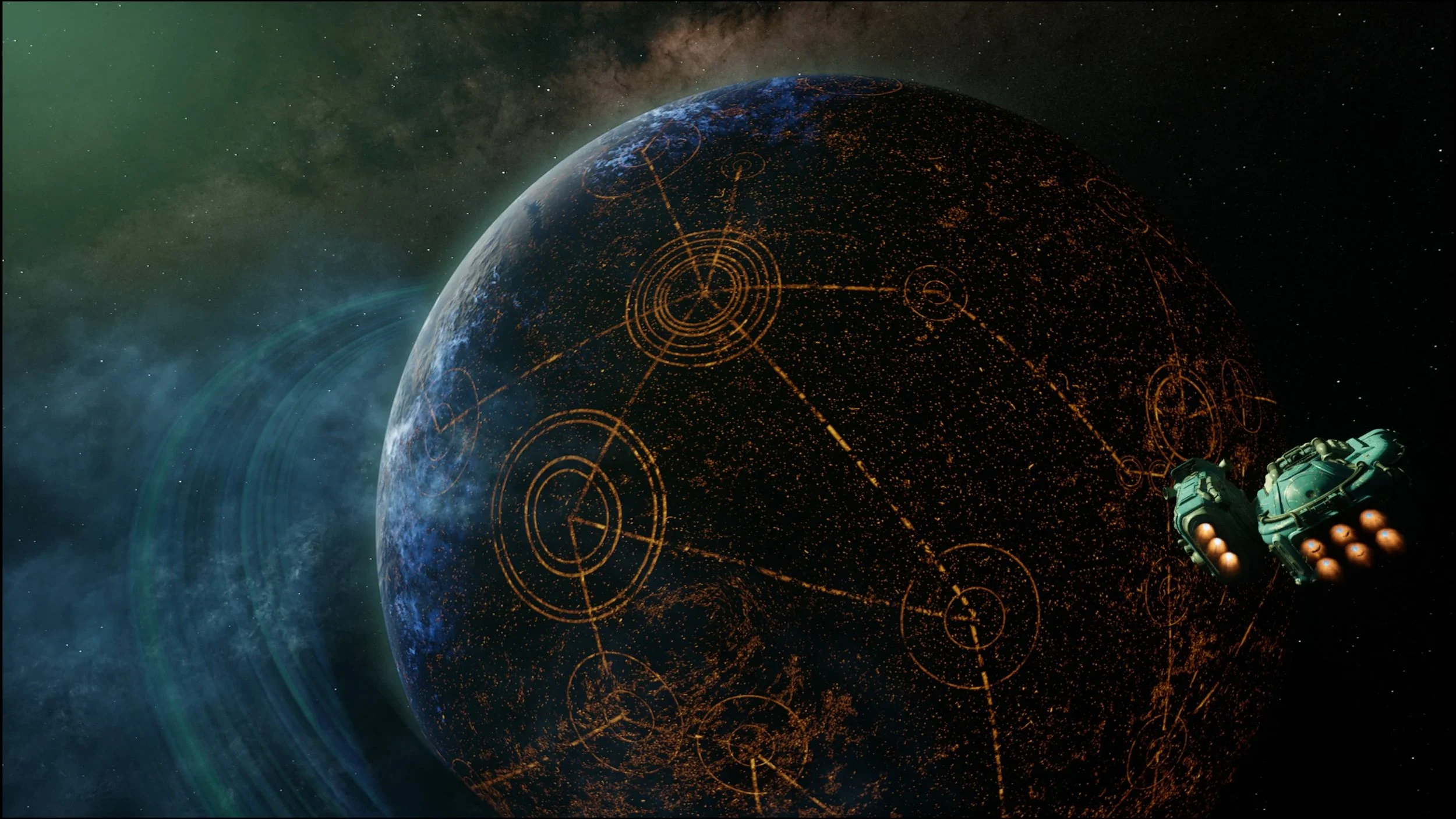



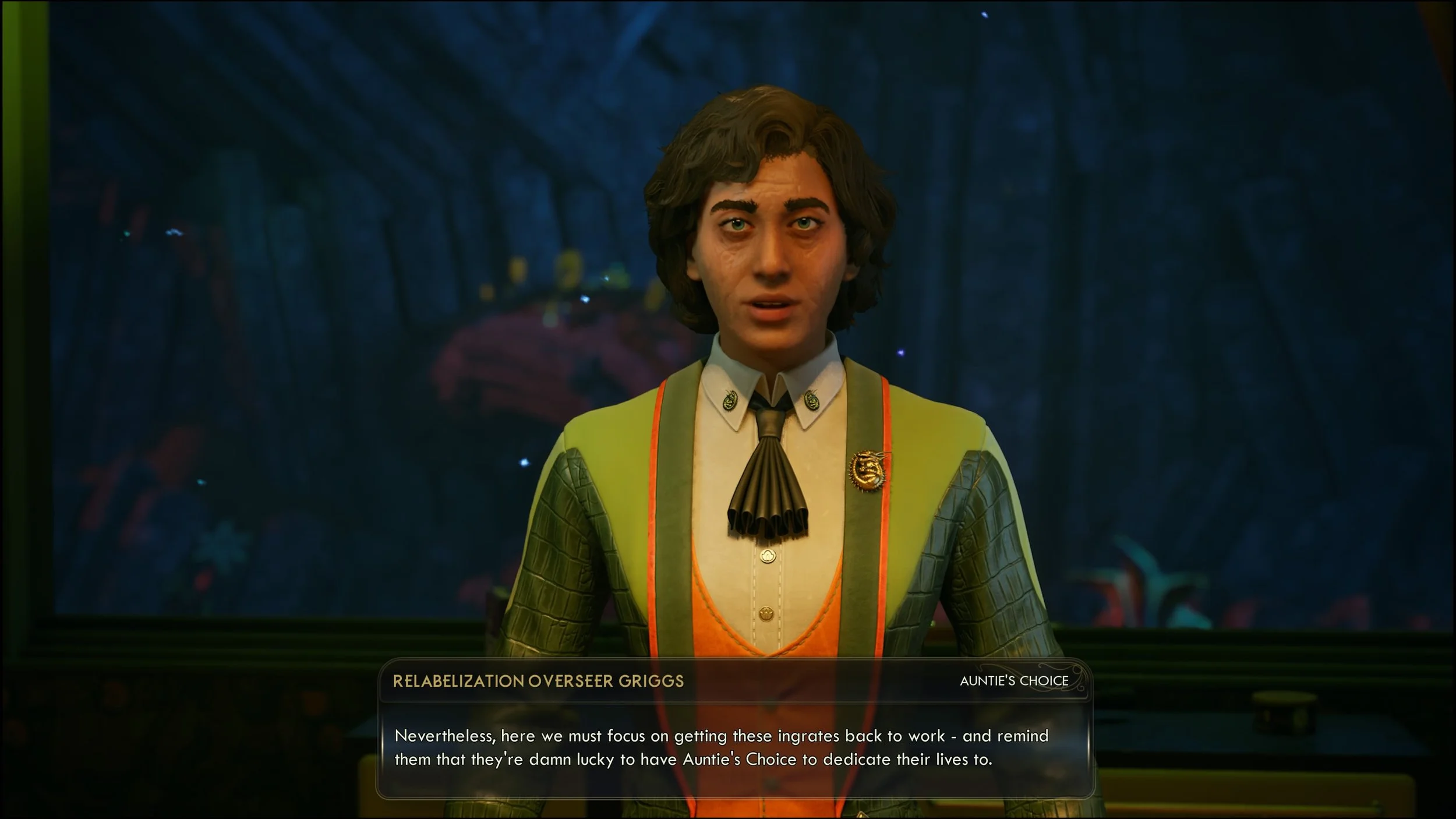
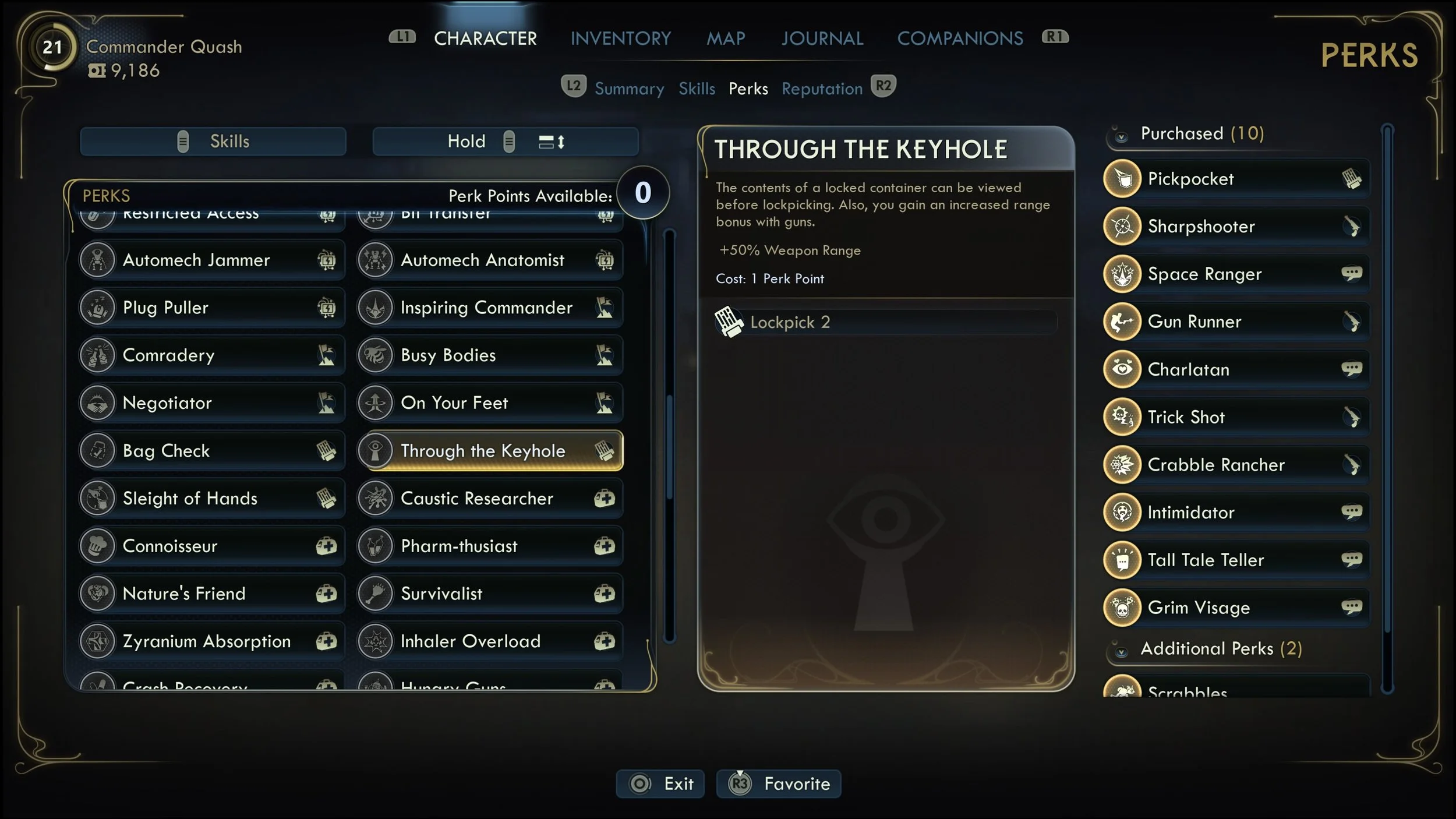
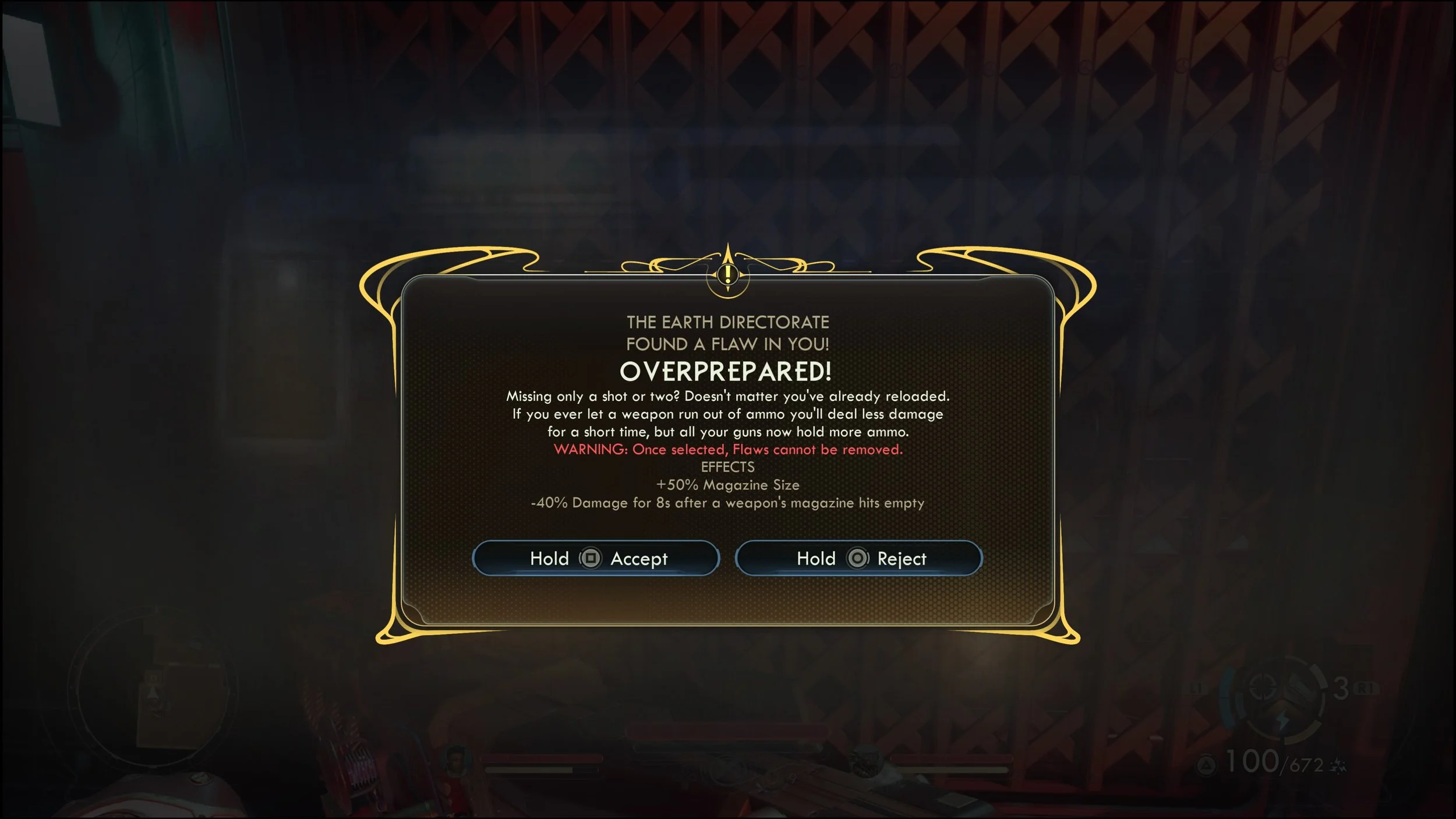
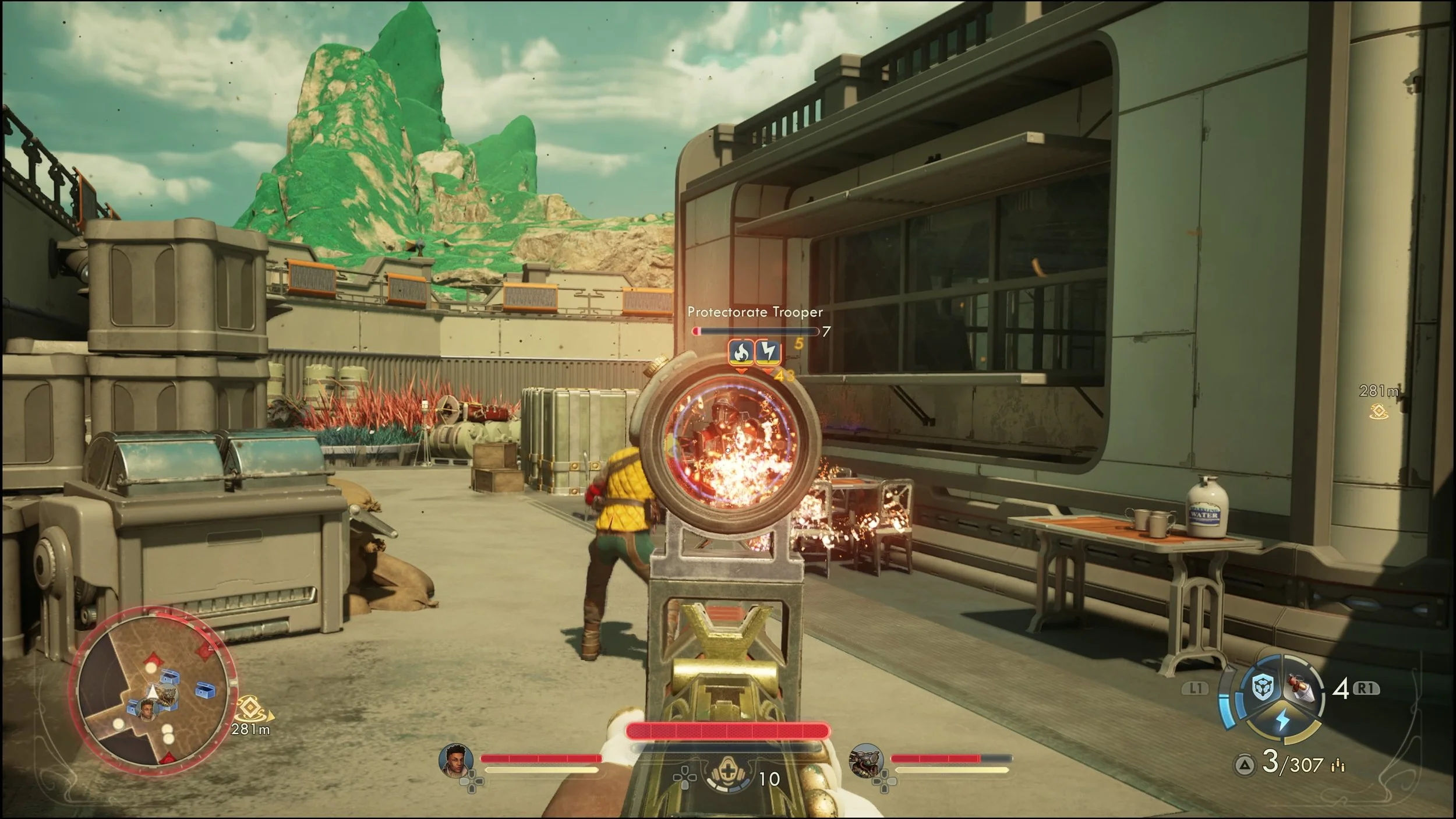
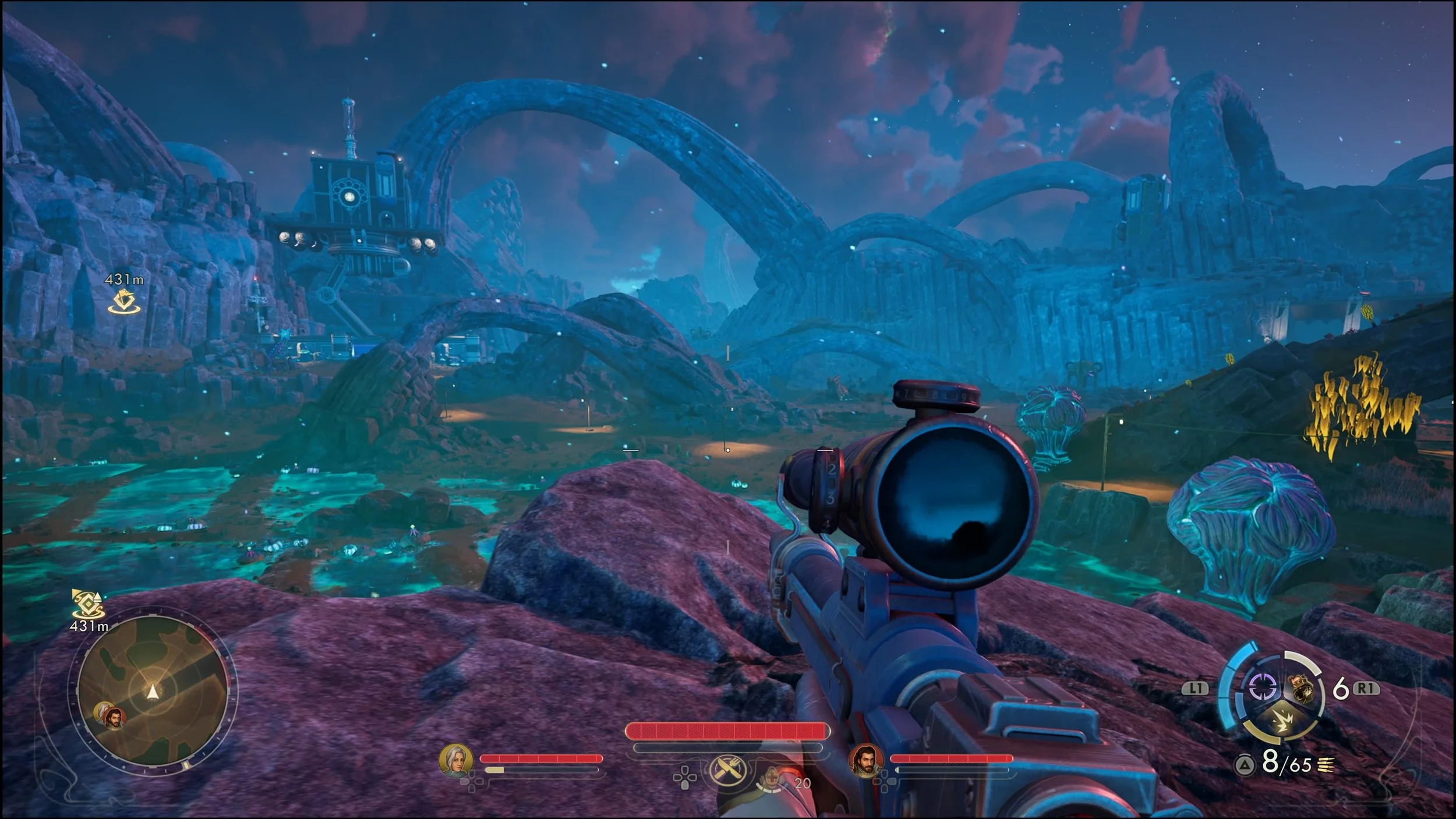
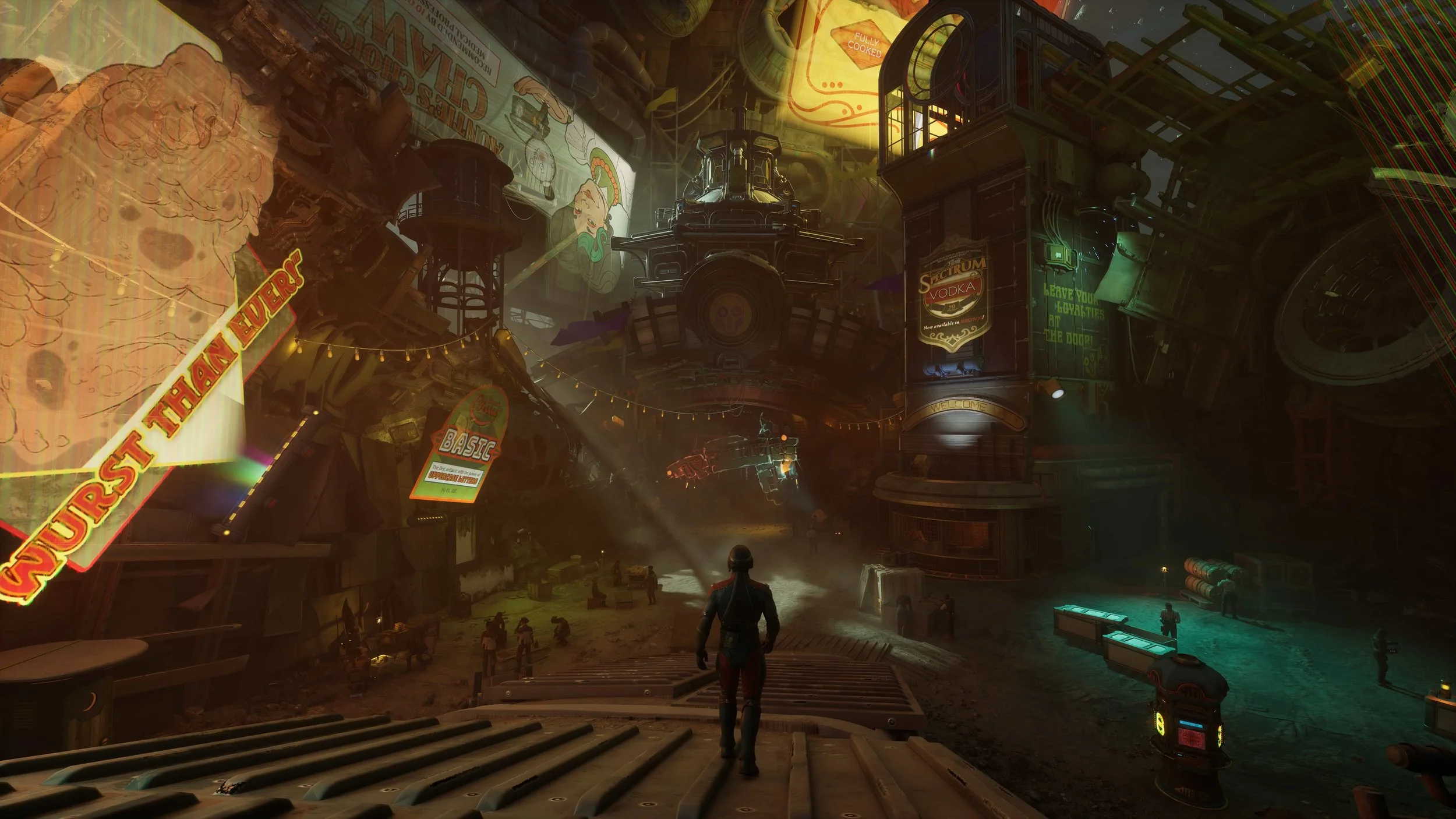

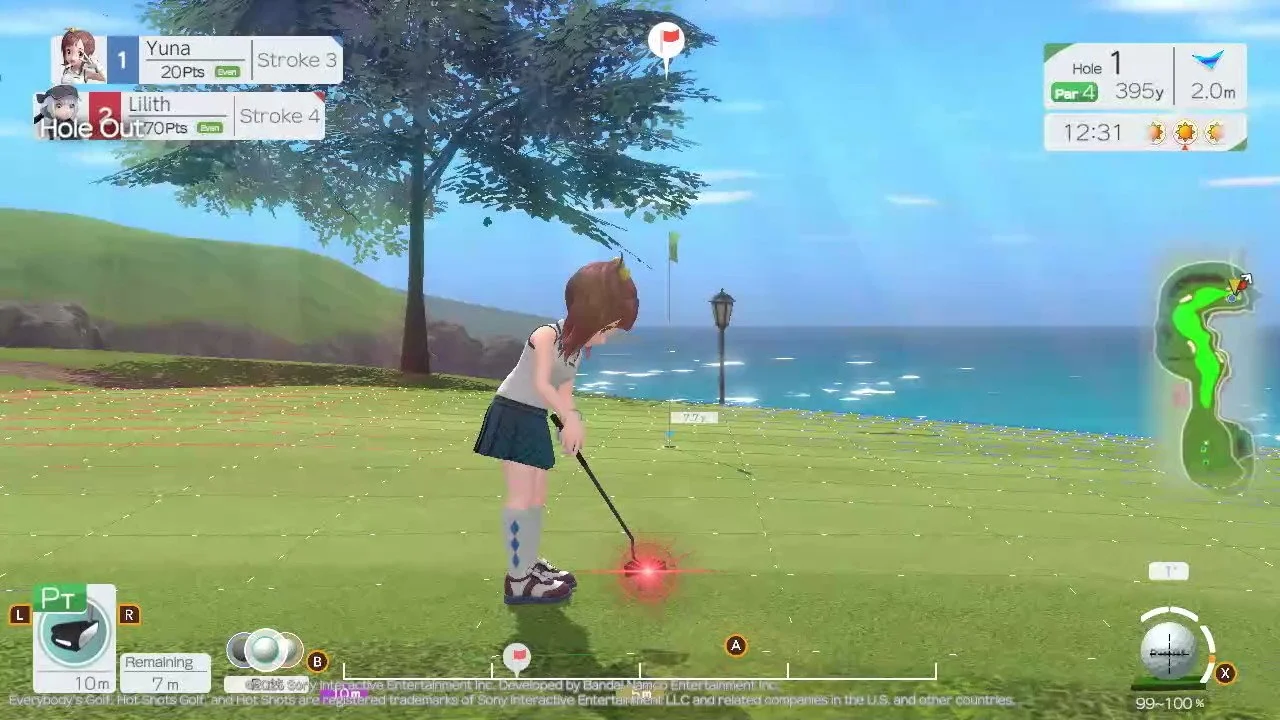

Microsoft Flight Simulator 2024 is a solid simulator with rough edges that disrupt the flow of learning and experiencing modern flying. Those new to the world of flight simulation will be overwhelmed and frustrated. But for those well-versed in the world of aviation, you will find appreciation for what is available here, even on the PS5 version of the game.